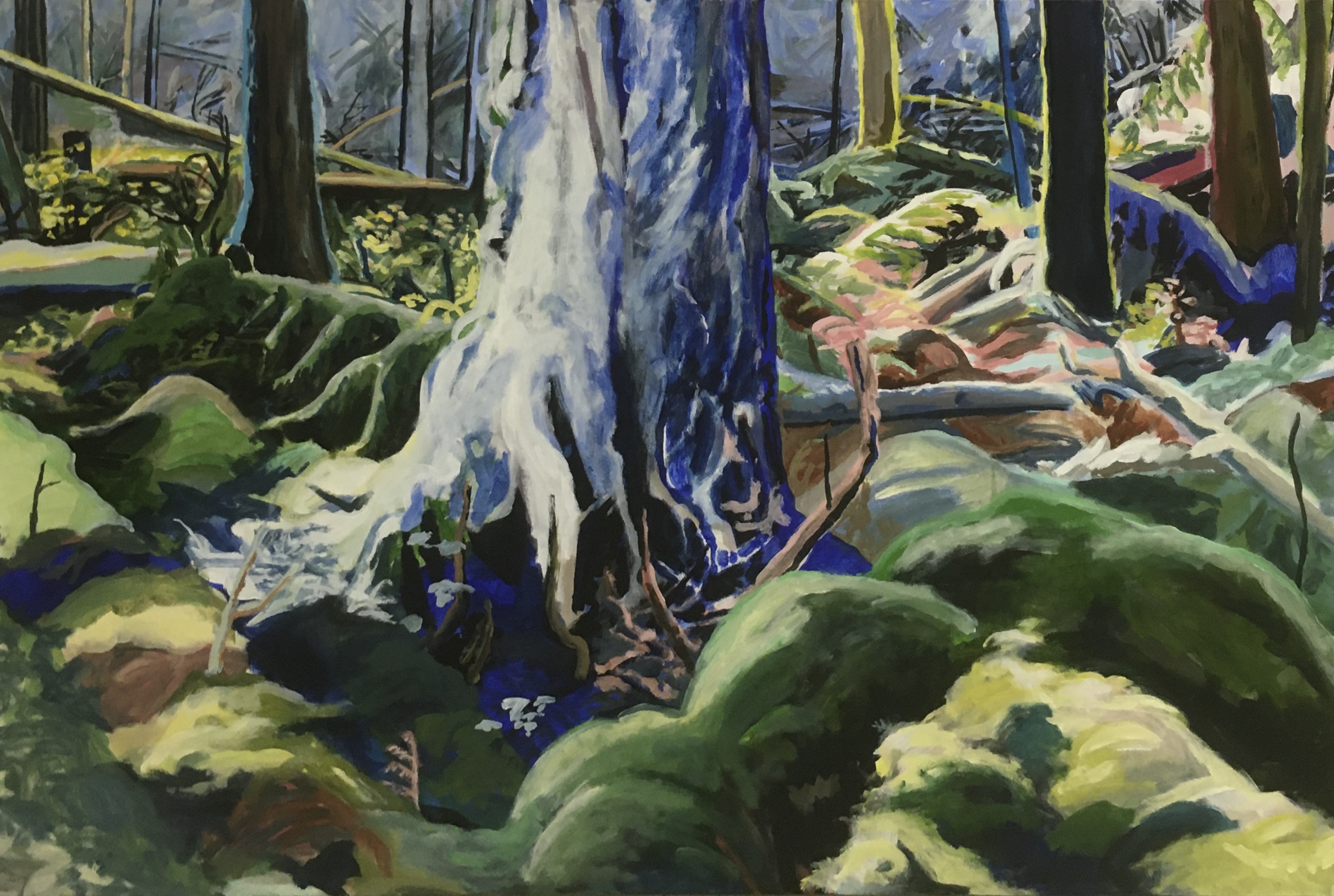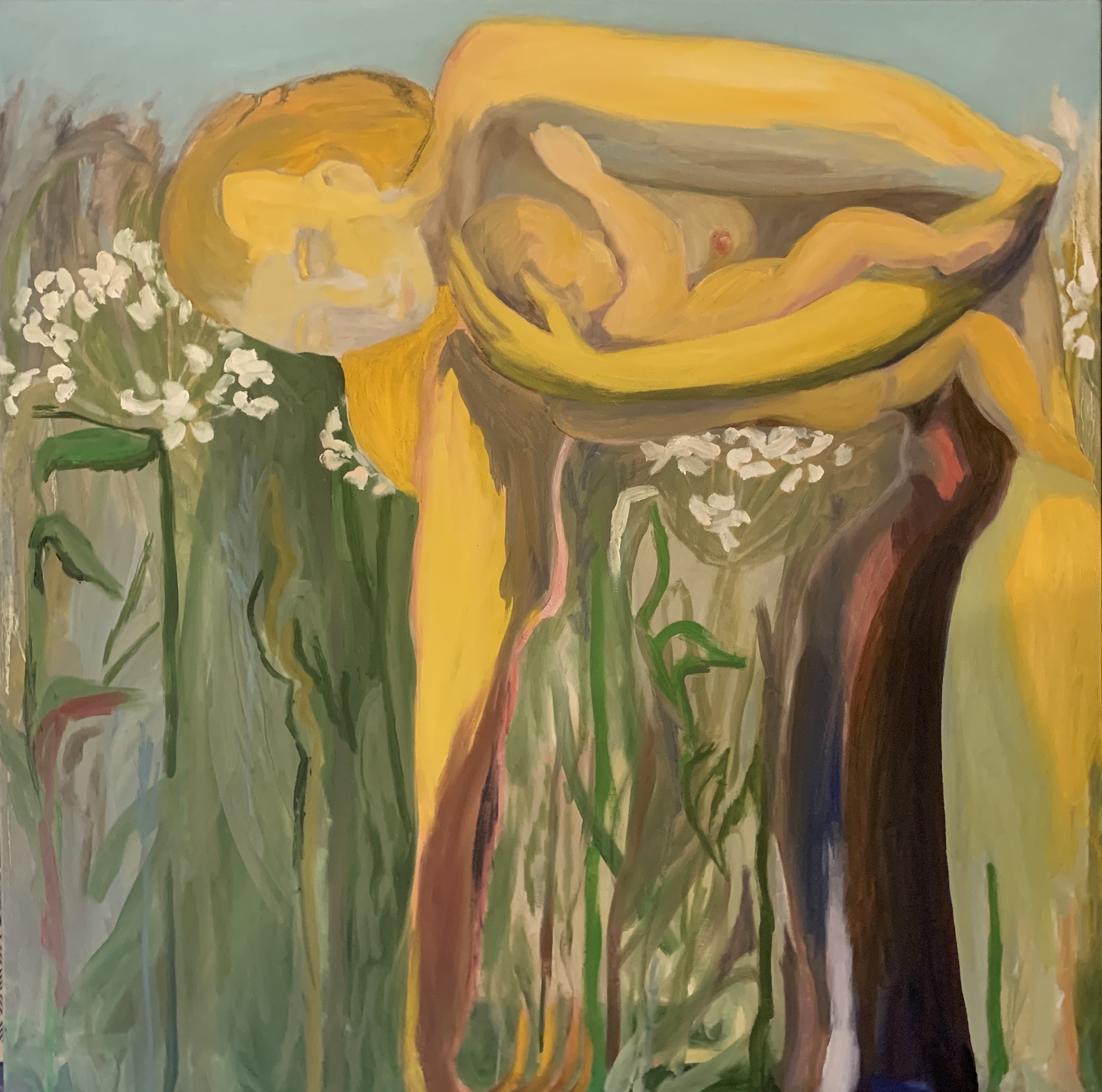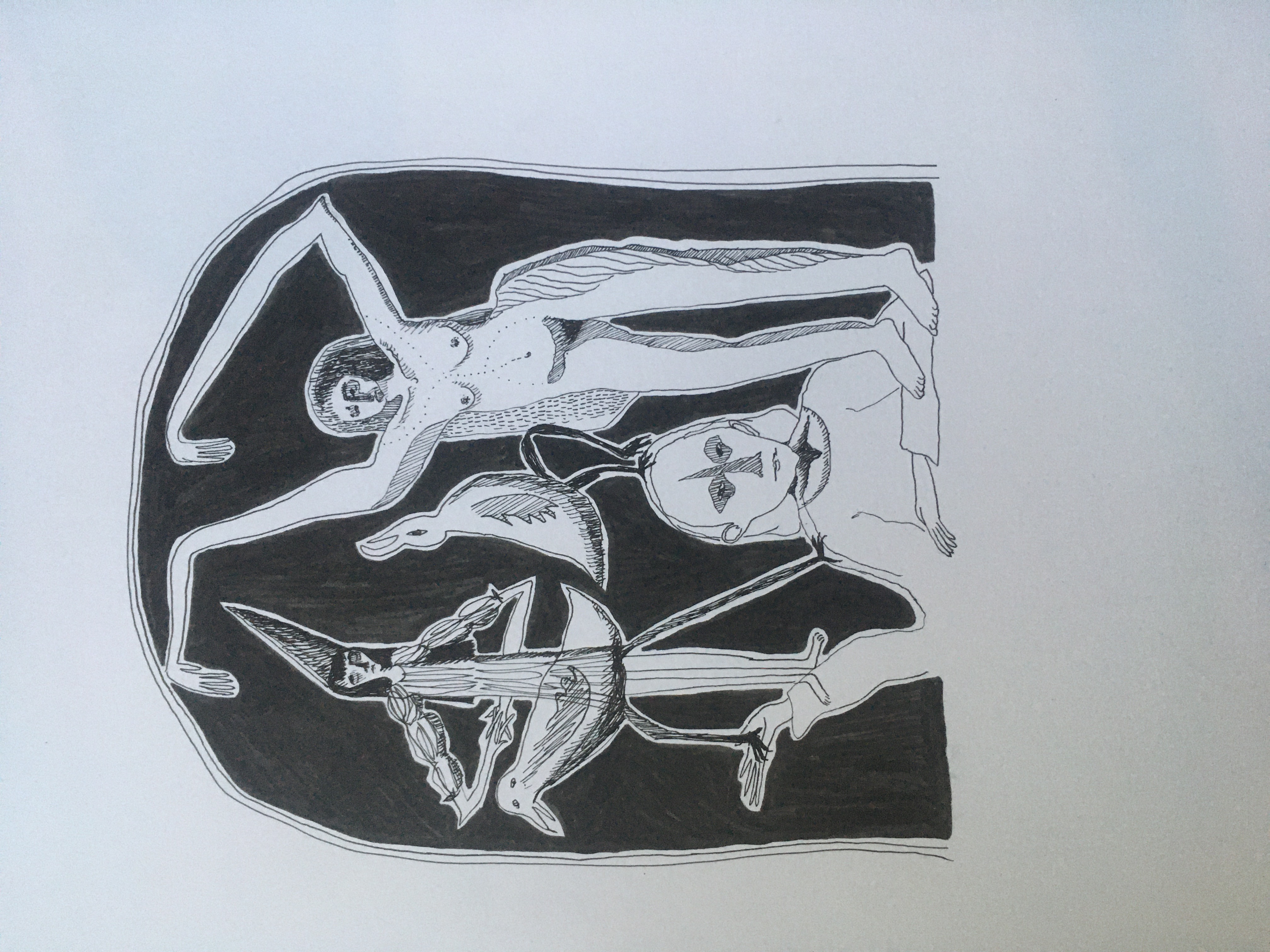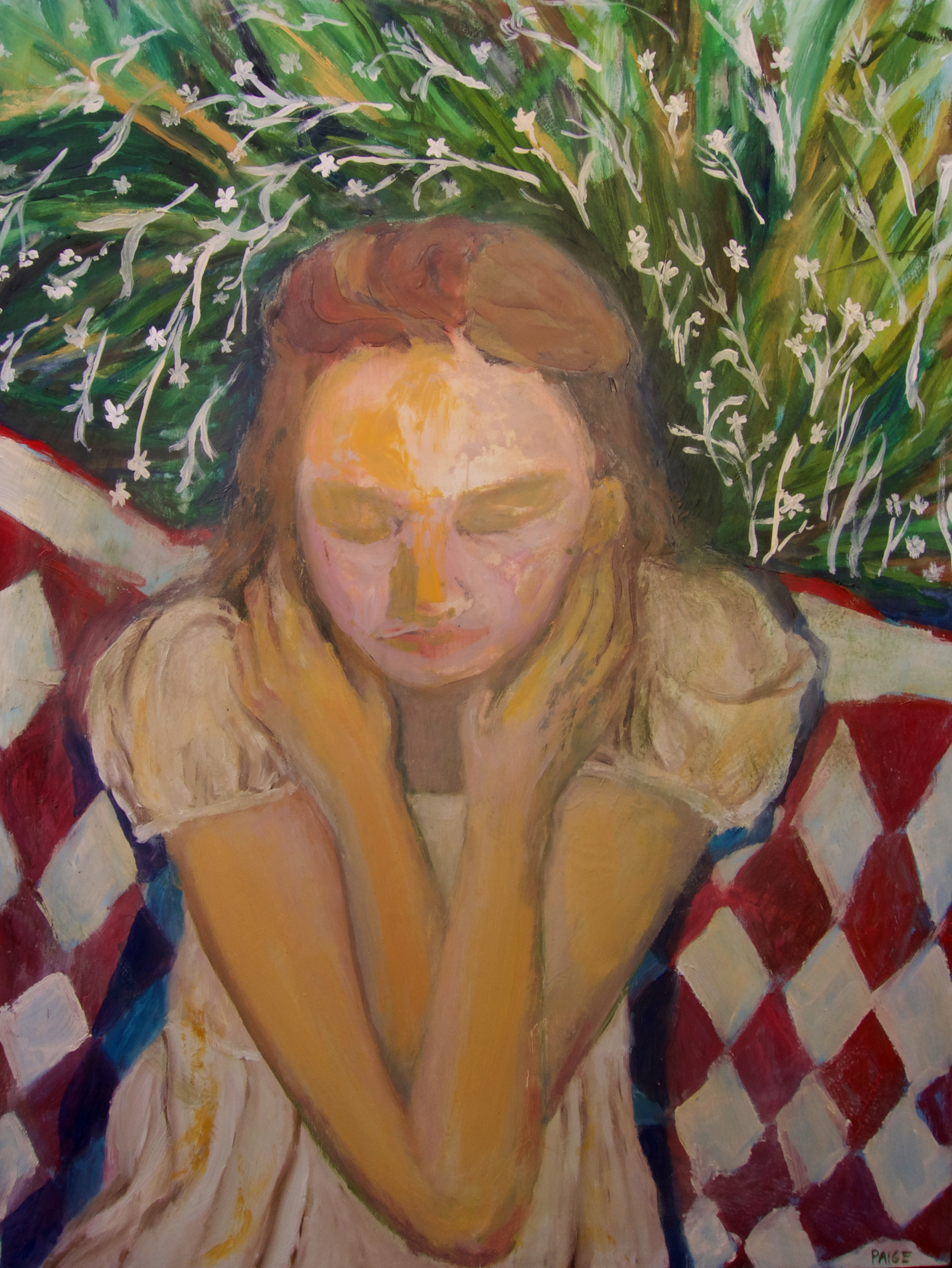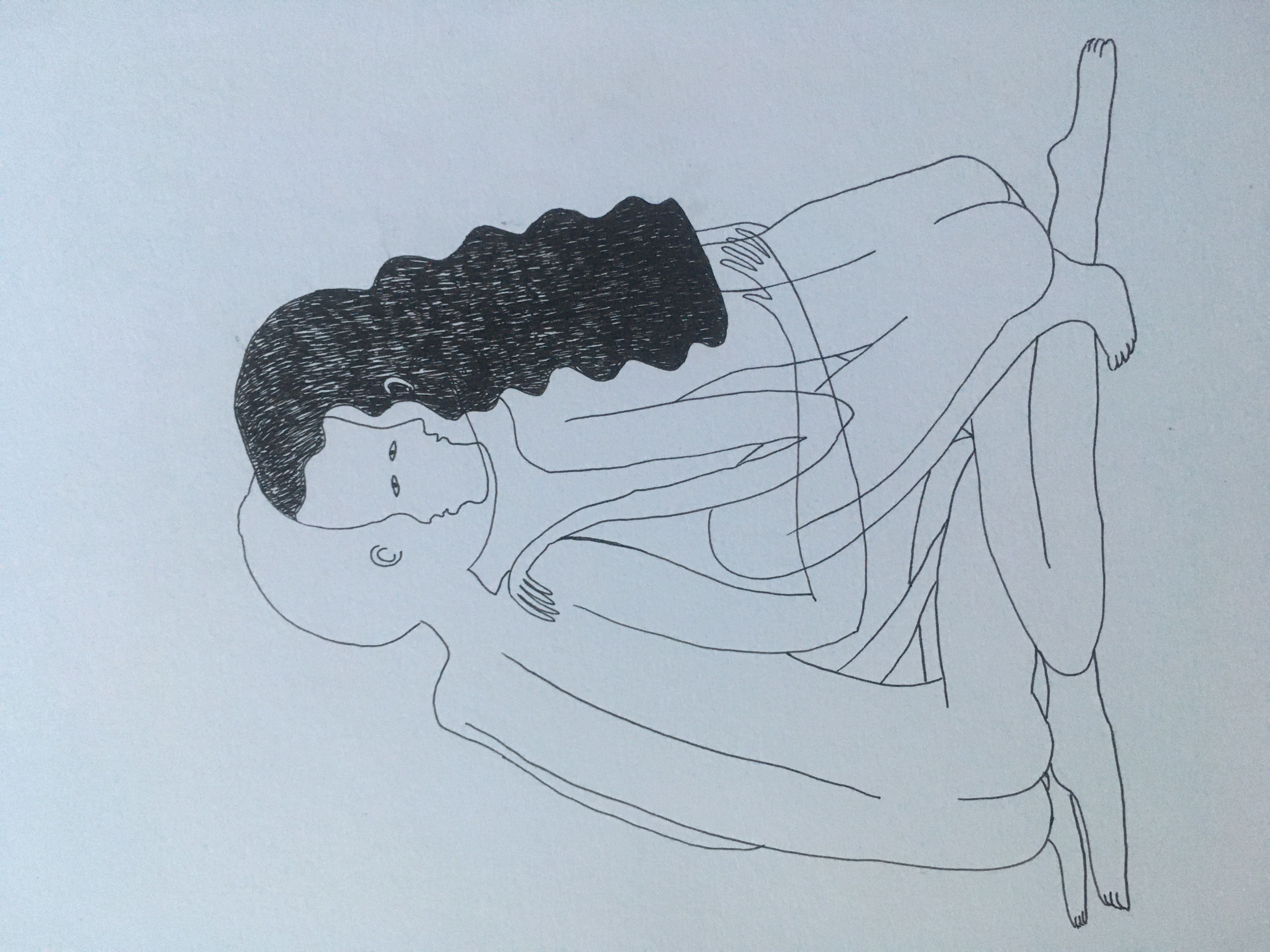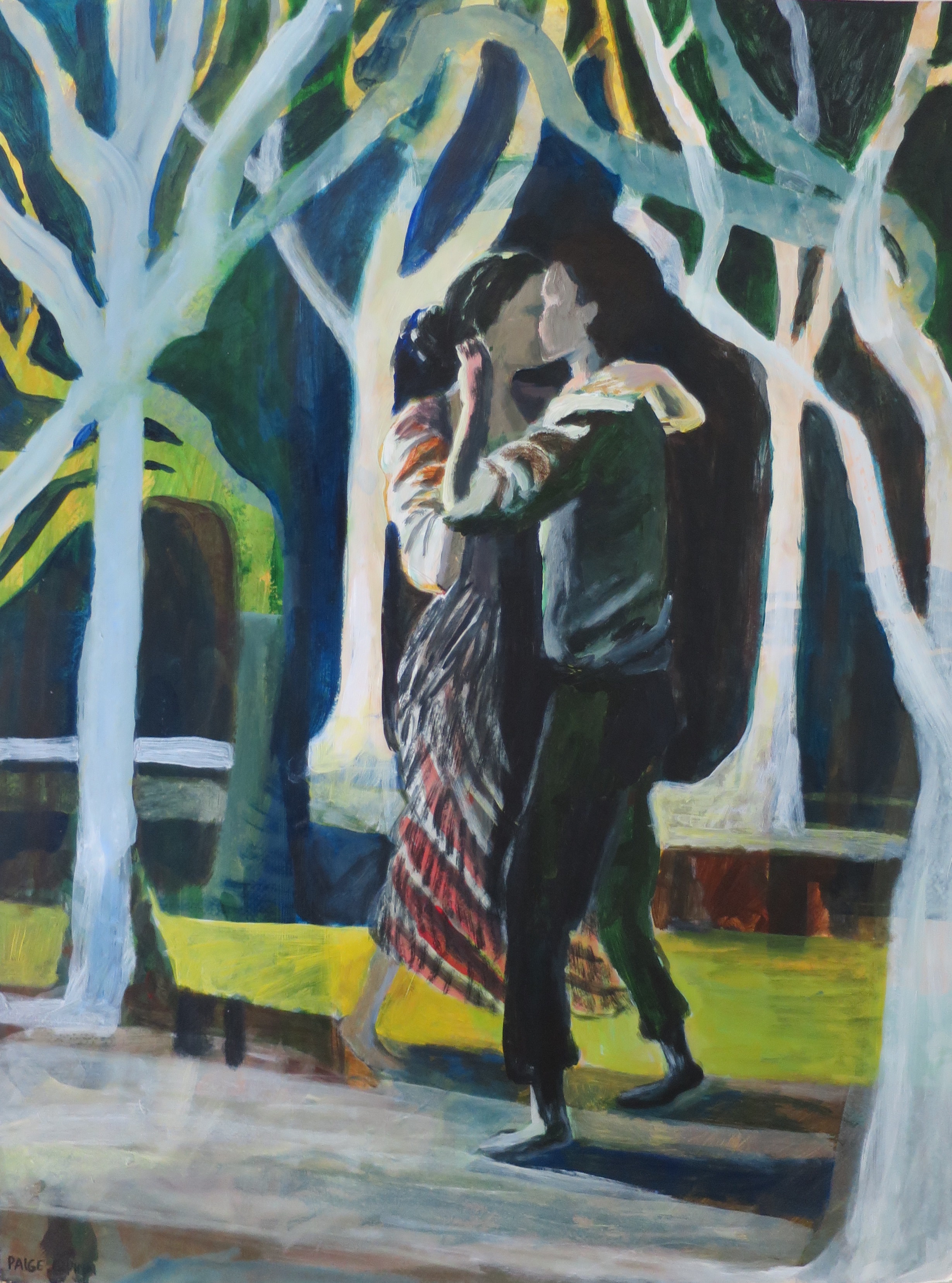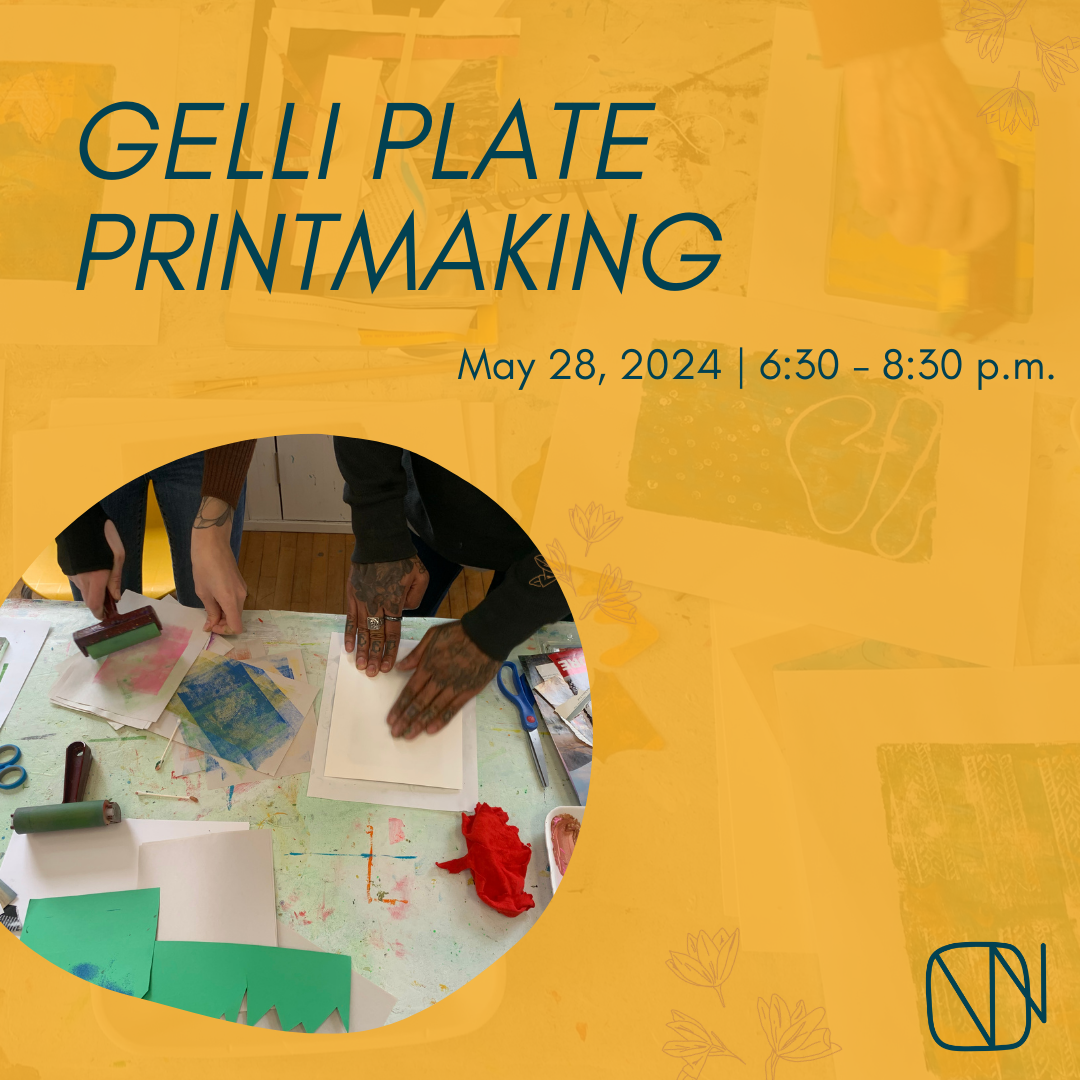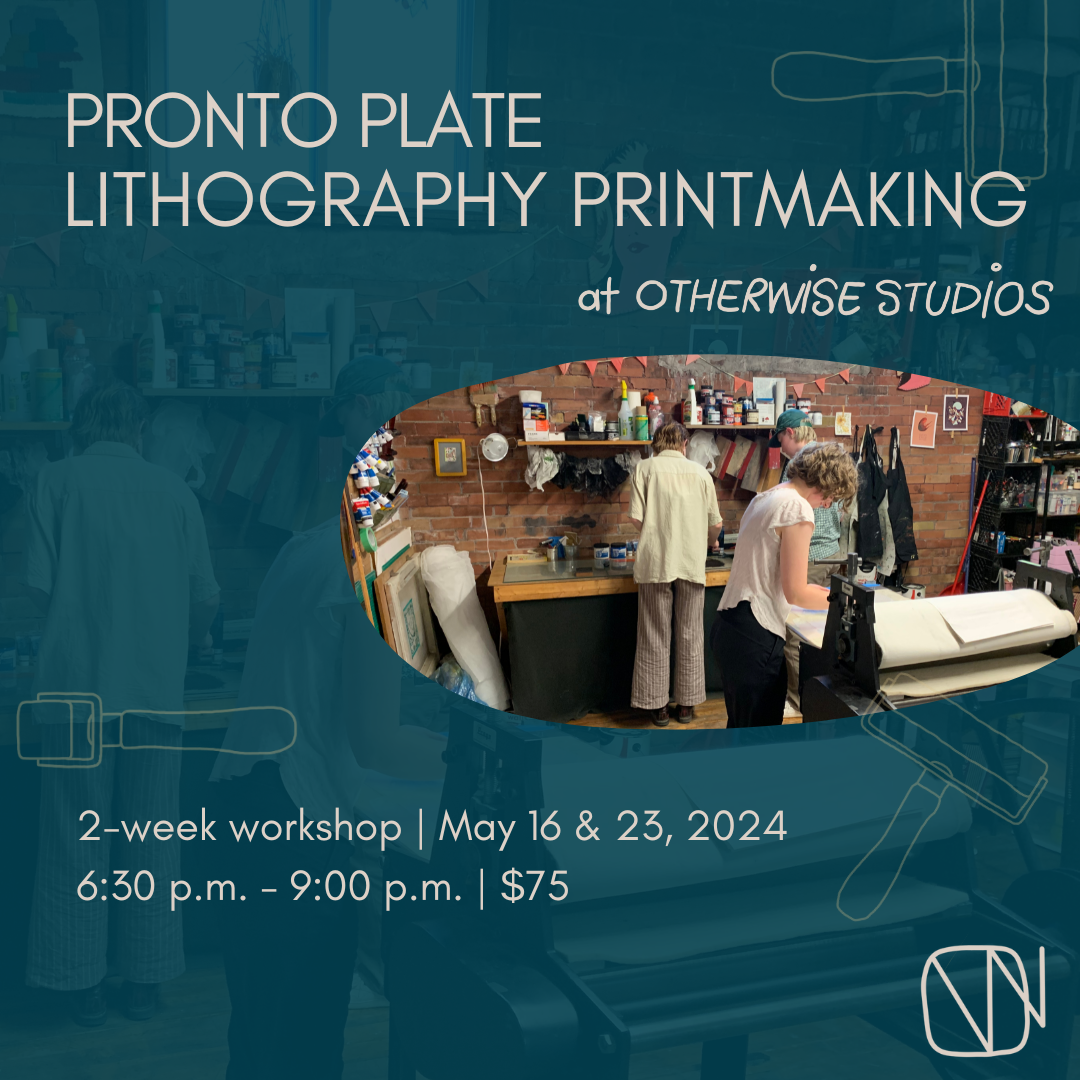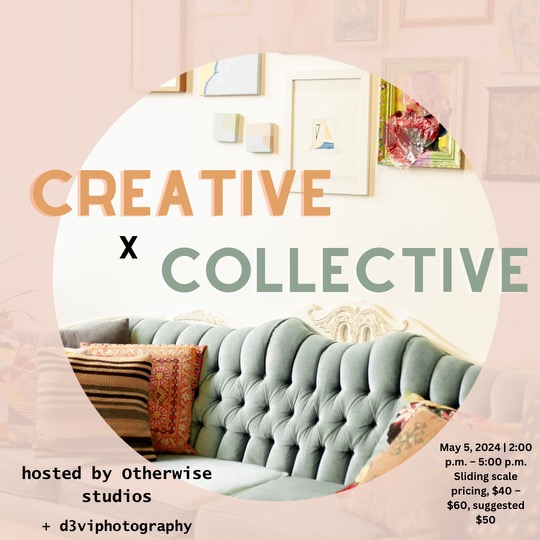PAIGE QUINN
“Once I have a couple lines down of whoever I am drawing, the drawing itself will tell me what it needs, whether it’s a leg or arm placed in a certain way, a facial expression, etc. What I love about this, is that I am not forcing an image into permanence, it is telling me what it needs to become complete.”
Paige is a painter and illustrator who currently lives and works in Guelph, ON. Her artworks are inspired by spending large amounts of time outdoors studying the unusual shapes in nature, as well as the weird and wonderful characters who inhabit her consciousness. Her technical background is in Ecology, which has greatly influenced her practice.
We had a chance to chat with Paige about what inspires her, and the thought process behind her making! Keep reading for the full interview.
Can you talk to us about the importance of nature and the environment in your work?
“Nature has been very influential in my art practice as a source of inspiration and starting point for my paintings. I spend a lot of time in nature each summer as a tree planter in Northern BC. Being outside all of the time really slows down your pace and makes you think a little bit more critically about society as a whole and all of the barriers we put up in between ourselves and nature, as well as the general disconnect that many people have living in cities. In my art practice I have been thinking recently of counteracting that separation and having humans connecting or fusing with the earth, in a corporeal sense or spiritually. I wanted to show the diversity and complexity of ecosystems, working with oil paint to push and pull colour through the layers of my paintings.”
As an ecologist, how do you pull from your studies to inform your paintings?
“I think my background in ecology informs my art as a lot of the subject matter comes through the entanglement of nature and humans. During my bachelor’s I also took this amazing course in environmental philosophy which has been really fascinating to me as well and has driven some of my research and thought processes behind my paintings. I recently have been reading books by David Abram and Robin Wall Kimmerer which give me more insight into the nature-human relationship.”
What is it like for you to come from Victoria, BC to Guelph, ON? Has your practice changed or evolved at all with the change in scenery?
“I lived in Guelph for my degree, and it’s awesome to be back somewhere with such a great community. The biggest change in my practice is that I was lucky enough to find a house in Guelph with a spare room which I use as a studio. I was sharing a studio in Victoria and before that in Squamish, and it is very freeing to have all that room for myself just to get the mental space to really zone in on my paintings.
Tell us about the characters in your work. Where do they come from?
“Most of them come from a vision, memory or feeling that will strike me and I usually work from that directly. I’ll sit down to draw, and I start to work out the idea in my head, but I become led by the original loose marks that put down on paper. Once I have a couple lines down of whoever I am drawing, the drawing itself will tell me what it needs, whether it’s a leg or arm placed in a certain way, a facial expression, etc. What I love about this, is that I am not forcing an image into permanence, it is telling me what it needs to become complete. This sort of conversation with my artwork allows me to bring things into the world that I am not even sure what it will be at the end.”
How do memories shape these characters?
“Memories are very important to my practice as I will think back to a time I was in nature and felt particularly connected with the earth. I’ll visualize where I was and get into the feeling I was having at the time and work with that as a subject matter for my paintings. A lot of the time the characters I bring to life are based on my memories or memories of a time when I felt really strongly.”
Everyone works differently. What’s your best workflow?
“My best workflow is kind of split between my drawings and paintings, usually for drawing I need a deep emotive starting place, and generally a lot of patience as I will sit down for 6-8 hours or so at a time to work on a drawing and kind of forget to do anything else.”
“For my paintings, I work best in a type of meditative hyper-focussed state where I am very centred on the painting and I will move from painting, drinking tea, listening to music on repeat and writing poetry or small notes in my sketchbook, and move through these motions on a cycle, adding and taking away from my painting until I am really stuck or I just need to wait until the next layer. I have a couple paintings that I work on at the same time just as I am figuring out the drying time of oil and I need somewhere to put that creative energy. Being able to have the space to focus completely on exactly what is happening between me and a painting is really important to me.”
Where do you find inspiration for the textures in your illustrations?
“The texture comes through what is already there on the paper, when I first started making the twisted skin in Anura, one of my first graphite drawings, the pattern just came naturally from the way I was shading, with some areas darker than others. I saw what was already happening in the drawing and emphasized it.
Each piece that you create has varying levels of resolution held within the work, creating beautiful tensions and dynamic compositions. For example, you’ll paint washes in one area, and detailed blending in another. What is your thought process behind these decisions?
“I honestly just love the added complexity which it brings to the final image. I really like it when you have to spend some time with a piece of art to really figure out what is going on. It adds a new dimension and I think appreciation. Working in layers allows me to work in a way where I invite chaos and spontaneity into my paintings by letting parts show through in new combinations.”
Have you always wanted to be an artist?
“Yes, I wanted to be an artist since I was a little kid. I was a bit dissuaded, but I am back at it now.
If you could be anything in your studio, what would you be?
“As a personality trait: more fearless in my art. As an object: a window to the outside.”
www.paigefitzquinn.com
Instagram: @paigefitzquinn

